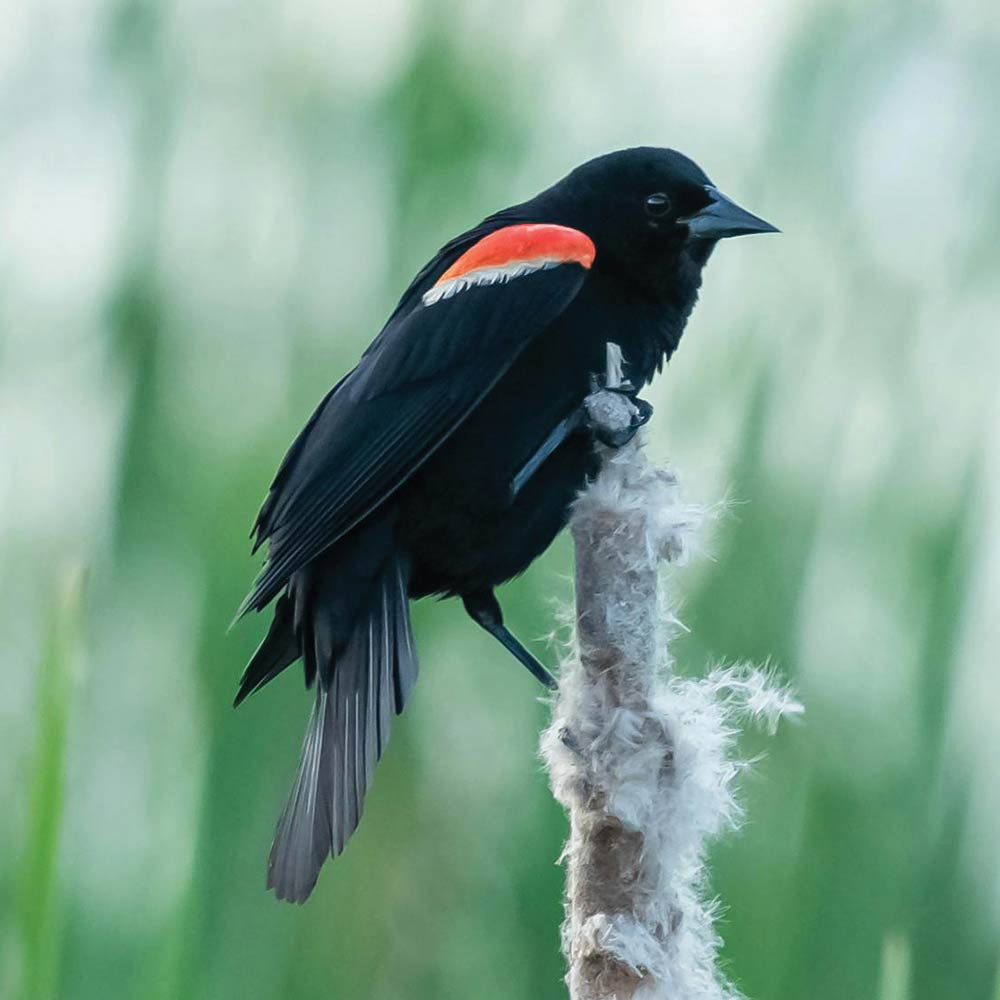Conk-la-ree! Red-winged Blackbirds Return
The Great Outdoors | March 4, 2024

By Jackie Scharfenberg, Naturalist
We, red-winged blackbirds (Agelaius phoeniceus), just arrived from our winter homes in the south returning with our fellow blackbirds in large mixed flocks. We males return before the females in late February and early March to stake out the best nesting locations in wetlands, from large cattail marshes to wet roadside ditches, and nearby uplands. The smaller, brown-streaked females will arrive a few weeks later.
TERRITORY
To defend our territories from other males and impress the females, we find a high perch to strut our stuff in a “song spread.” We fluff our glossy black feathers, raise our red and yellow shoulder patches, spread our tails as we sing “conk-la-ree!” If all goes well, we can attract from one to 15 females into our territories. The females not only mate with the territory defenders but also with neighboring males.
In the spring we can spend more than a quarter of the daylight hours fiercely defending our territories from high perches or while singing in slow, fluttering flights over our turf. We will chase out other males and attack nest predators, sometimes going after much larger animals, including humans. Watch out if you hear a loud high slurred whistle, “terr-eeee.” I may just dive bomb you to get you leave my territory.
HABITAT
The female chooses her nest site among the dense vertical stalks of marsh plants, shrubs, or trees near the ground or just above water. Using her conical, slender bill, she winds stringy plant material around several close upright stems and weaves a platform with course, wet vegetation. She finishes the outside by adding more wet leaves and decaying wood. She plasters the inside with mud to make a cup that she lines with fine, dry grasses. It takes her three to six days to construct her nest.
MATING
The female lays two to four pale blue/green to gray eggs with black, brown, or purple markings. She alone incubates the eggs for 11-13 days. Both parents help feed the naked uncoordinated nestlings. If a female senses danger when bringing food back to the nest, she flips and waves one wing in the air over and over to distract the predator. After about two weeks, the nestlings fledge, and become independent two to three weeks later. The females mature in one year, but the males take two to three years to get their glossy black plumage.
DIET
Being omnivores, we eat many different things. In summer we add insects, spiders, worms, snails, frogs, eggs, carrion, and berries to our diet of a wide variety of seeds including grains. Come September/October the females migrate south first, followed a couple of weeks later by us males. We migrate in huge flocks with other bird species that may number in the thousands to millions. We fly and feed during the day and roost in trees at night.
Next time you visit a wetland of any size in late winter, listen for our “conk-la-ree.” It’s a sure sign that spring is just around the corner.



